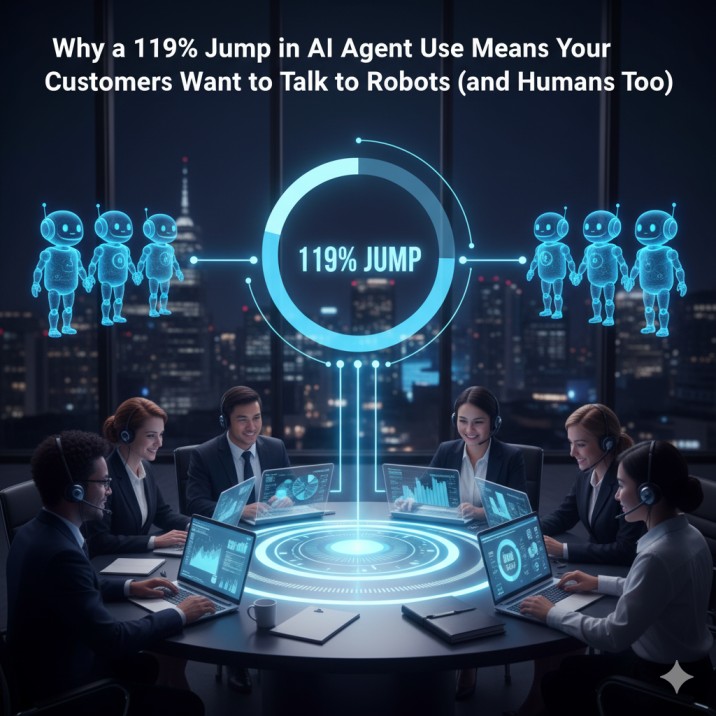Why Your Taxpayer-Dollar AI Needs a Nametag: Exploring Government AI Registries
The federal government plans to launch a public registry of its new artificial intelligence projects as a way to keep citizens informed and help government departments track their own AI efforts.
Supposedly, your tax dollars are being used to build an AI tool inside a government office. You wouldn’t want it working in the shadows. You’d want to know who built it, what it does, how it uses our data, and whether it’s fair. That’s where government AI registries come in.
What is a government AI registry?
When we talk about a mandatory AI register or government AI registries, we mean a list or database kept by the public sector that records details of AI systems in use by government agencies. The idea is to foster public sector AI transparency. It’s part of the broader AI governance framework that says, “When taxpayer-funded AI is being used, people have a right to know.
Here, the government says such a registry will help departments coordinate, avoid duplicating tools, and make sure they know what AI is in use.
Suggested read: AI in Government: What Saudi Arabia’s LAHINT-Google Partnership Teaches Us
Why does it matter when AI is funded by taxpayers?
When public money (that is, taxpayer dollars) is used to build or deploy AI, that means the public has a stake in how it is used. That’s why whenever we see taxpayer-funded AI in action, there should be visibility. A registry helps with that by listing the AI, explaining what it does, who runs it, and how it’s monitored.
Without such a registry, you might have agencies building AI independently, with no full view across the government. That can lead to duplicate tools, wasted money, inconsistent standards, or risks to privacy and fairness. For example, in the article the government said, “We don’t want five different departments working on the same type of tool all at the same time.”
Suggested read: AI Goes Public: What the $95B Shift Means for You
How a registry helps build trust
A strong AI governance framework includes principles like accountability, fairness, and transparency. A public registry bolsters these by making sure people can see what AI is being used in the public sector. That helps with trust: citizens are more comfortable when they can check what’s going on.
In the example article, the registry is still under development, and a timeline is not yet set. But the idea is that it will list AI systems that are embedded in government functions—not every small usage like an email assistant, but larger tools.
Suggested read: 10 Steps to Regulate Unauthorized Use of AI—Lessons from Zelda Williams’ Plea
What kinds of AI might go into the register?
The article gives useful examples: one department used AI to help find lost fishing gear; another used satellite data to predict crop yields; yet another uses AI in screening high-risk air cargo.
Each of these is a case of taxpayer-funded AI. When a registry is in place, you might see entries like “AI tool for finding fishing gear—built by Fisheries and Oceans Canada” and so on. Each entry would ideally include a description, risks, mitigation, and contact information.
Suggested read: Africa Unites for AI: A Common Policy Vision from GITEX Nigeria 2025
What remains to do
Even though the registry idea is in motion, there are gaps. The article notes that the government does not yet have a “full and complete list” of AI systems in use.
Also key questions:
- Which systems will be included in the registry? Will smaller, low-risk tools count? The article says, “We don’t want to capture every time an analyst uses Copilot to help write an email, but we do want to capture all the projects and systems that have AI embedded in them.”
- What level of detail will the public get?
- How will updates happen?
- How will accountability and monitoring be built in once systems are listed?
All of this ties to the need for a robust AI governance framework that includes the registry as one piece of a larger system of oversight.
Suggested read: Ethics, Governance and Sustainability: The Bright Side of AI Leadership
Why you should pay attention
Even if you are not working in government, the presence of a registry matters to you. When taxpayer-funded AI systems are used, you might be affected: for example, in services you use, eligibility decisions, benefits, and access to information. If you know a system is listed, you might find who to ask if you believe it treated you unfairly.
When governments adopt public registries, it raises the bar for transparency, encourages better design of AI systems, and helps ensure they are built with fairness and safety in mind. In short, your money, your services, and your rights get better protection.
What you can do
- Keep an eye out for announcements of public registries in your country or region.
- When you hear of AI tools used in public services, ask, “Is this listed in the AI register?”
- Push for clarity: what the tool does, who built it, and what safeguards are in place.
- Learn about how public sector AI transparency works and how you can hold agencies accountable.
If you are part of an organization, work in government, or simply care about how AI is used in public services, pursuing formal training and certification in this area gives you an edge. The team at AI CERTs offers an “AI Government Certification” that helps you master how to implement, govern, and monitor taxpayer-funded AI systems within a strong AI governance framework. Whether you want to help build, audit, or manage public sector AI, this certification can provide the roadmap.
There you have it: a clear look at why every taxpayer-funded AI system could use a nametag via a government AI registry, why transparency matters, and how you can engage. Enroll Today!
Recent Blogs

FEATURED
Small Business, Big Impact: How AI Can Level the Playing Field
November 12, 2025
FEATURED
How 6G + AI Will Change Our Everyday Lives, Not Just Our Screens
November 12, 2025
FEATURED
Why AI Can Make Policy-Makers Feel Less Like Spreadsheet Operators and More Like Visionaries
November 12, 2025
FEATURED
Why a 119% Jump in AI Agent Use Means Your Customers Want to Talk to Robots (and Humans Too)
November 12, 2025
FEATURED
Mondelez’s 40 Million Dollar Bet on Generative AI and Why Marketers Should Care
November 12, 2025

